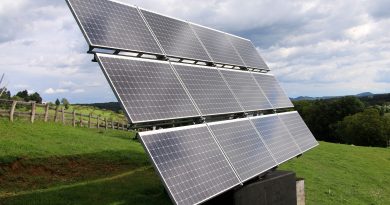Wired to Shine: On-Grid Solar Mastery
The world is experiencing a renewable energy revolution, and one of the most promising technologies leading the charge is solar power. Solar energy is clean, abundant, and offers tremendous potential to reduce our dependence on fossil fuels. In recent years, the widespread adoption of solar on-grid systems has gained considerable traction, as it allows individuals and businesses to tap into the power of the sun while remaining connected to the electrical grid. In this blog, we will explore the benefits and mechanics of solar on-grid systems, highlighting why they are an excellent choice for those looking to embrace sustainable energy solutions.
Table of Contents
What is Solar On-Grid?
Solar on-grid, also known as grid-tied or grid-connected solar systems, are photovoltaic (PV) systems that generate electricity from sunlight and deliver it directly to the electrical grid. Unlike off-grid systems that rely on energy storage solutions, such as batteries, on-grid systems utilize the existing power grid as a storage medium, eliminating the need for costly battery banks. This means that solar on-grid systems can provide electricity when the sun is shining and draw power from the grid during periods of low solar production or high energy demand.
The Benefits of Solar On-Grid
1. Cost Savings: One of the most significant advantages of solar on-grid systems is the potential for substantial cost savings. By generating your electricity, you can offset or even eliminate your monthly utility bills. Additionally, many countries and municipalities offer various incentives, such as tax credits and feed-in tariffs, for homeowners and businesses that adopt solar power, further reducing the overall cost of installation.
2. Reliability and Flexibility: With an on-grid system, you can enjoy the stability and reliability of the electricity grid while harnessing the sun’s power. During periods of low solar production, you can seamlessly draw power from the electrical grid without experiencing any disruptions. Moreover, on sunny days when your solar panels generate more electricity than you need, the excess power can be sold back to the grid, allowing you to earn credits or receive compensation for the energy you contribute.
3. Environmental Benefits: By choosing solar on-grid, you are making a significant contribution to reducing greenhouse gas emissions and combatting climate change. Solar power is a clean, renewable energy source that produces no harmful emissions, unlike fossil fuels. By decreasing your reliance on fossil fuels and increasing your use of solar energy, you are actively helping to create a more sustainable future for generations to come.
4. Low Maintenance: Solar on-grid systems are relatively low maintenance compared to their off-grid counterparts. With no batteries to monitor or replace, the ongoing maintenance requirements are minimal. Typically, regular cleaning of the solar panels to remove dirt and debris is all that is needed to ensure optimal performance. Additionally, many reputable solar installation companies offer comprehensive warranties, providing added peace of mind for homeowners and businesses.
The Mechanics of Solar On-Grid
To understand how solar on-grid systems work, we must delve into their components and how they interact with the electrical grid:
1. Solar Panels: The heart of any solar on-grid system is the solar panels, also known as PV modules. These panels consist of numerous individual solar cells that convert sunlight into direct current (DC) electricity.
2. Inverter: The DC electricity generated by the solar panels needs to be converted into alternating current (AC) electricity to be compatible with the electrical grid. This is where the inverter comes into play. The inverter converts the DC electricity into AC electricity that can be used immediately or fed back into the grid.
3. Bi-Directional Meter: To accurately measure the electricity going to and from the grid, a bi-directional meter, also known as a net meter, is installed. The net meter records both the electricity consumed from the grid and the excess electricity fed back into the grid, allowing for accurate billing and crediting.
4. Electrical Grid: The electrical grid serves as the backbone of the solar on-grid system. During periods of low solar production, or when the demand for electricity exceeds the system’s generation capacity, power can be seamlessly drawn from the grid. Conversely, when the solar on-grid system generates more electricity than is being consumed, the excess power is sent back to the grid.
Conclusion
Discover the practicality and cost-effectiveness of SolarClue®’s on-grid systems – an ingenious way to harness the sun’s power while staying connected to the electrical grid. Enjoy the benefits of cost savings, reliability, environmental sustainability, and low maintenance, making it an enticing option for both homeowners and businesses. Embracing solar on-grid is a significant step towards building a cleaner and more sustainable future. Why wait? Join the solar revolution with SolarClue® and start contributing to a brighter and greener tomorrow.
Frequently Asked Questions
On-grid systems not only reduce electricity bills but can also earn users money by selling excess energy back to the grid.
Yes, some systems incorporate smart inverters and AI-based analytics for optimized energy production and grid interaction.
Absolutely, by acting as distributed energy sources, on-grid systems can enhance grid stability, especially during peak demand periods.
Advanced systems employ weather forecasting algorithms to anticipate changes, optimizing energy production and grid interaction accordingly.
Yes, innovative solar technologies include transparent solar panels and solar-integrated designs that enhance architectural aesthetics.
Yes, many systems offer remote monitoring and control features through smartphone apps, providing users with real-time insights and control.
Indeed, community solar projects allow multiple households to share the benefits of a single, larger on-grid solar installation.
By displacing the need for conventional power sources, on-grid systems play a vital role in reducing overall carbon emissions and combating climate change.
Yes, the integration of on-grid solar with energy storage solutions like advanced batteries allows for continuous power supply, day and night.
Researchers are exploring concepts like solar roadways and solar paint, indicating a future where on-grid solar applications may extend beyond traditional panels.


